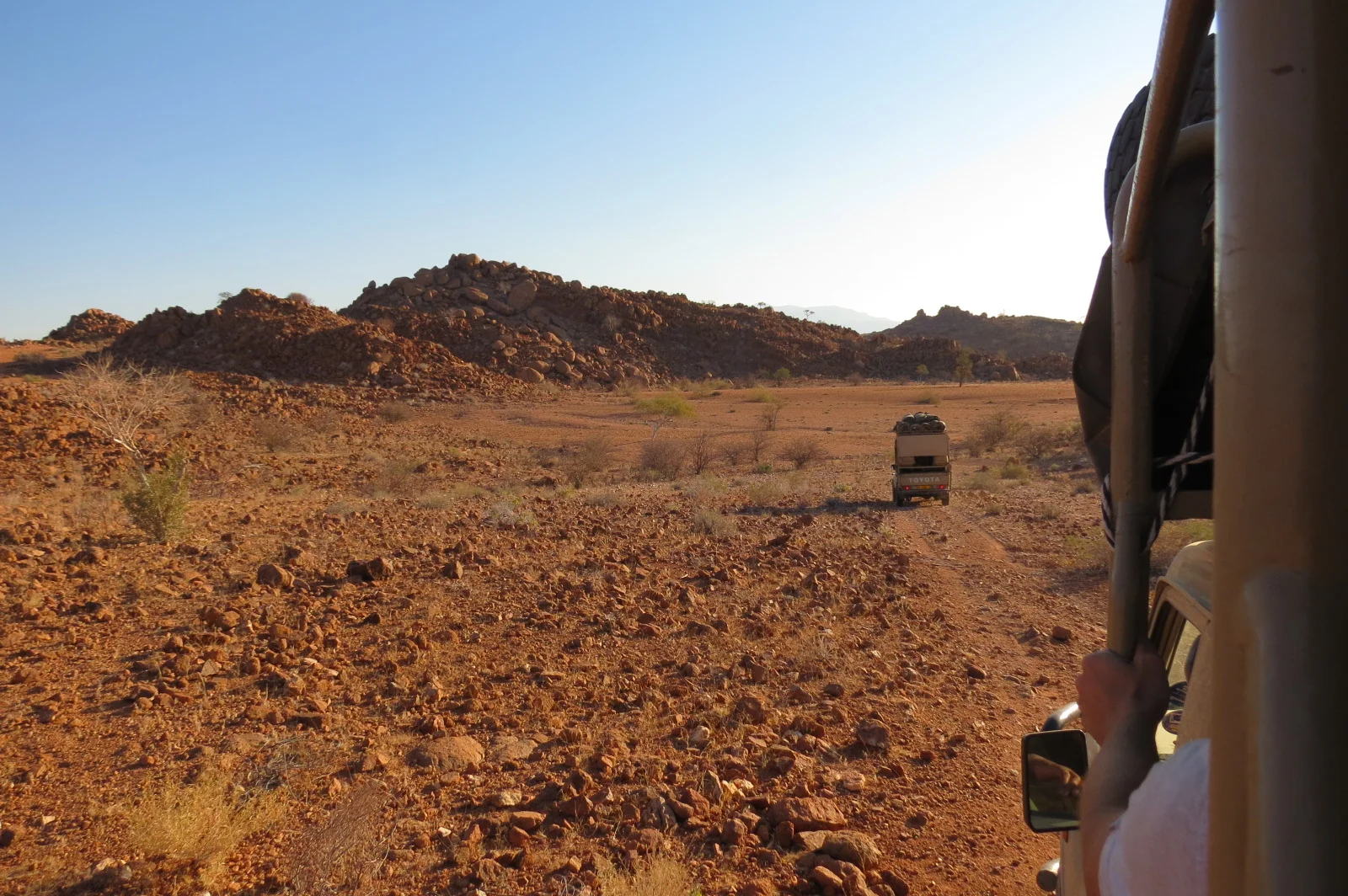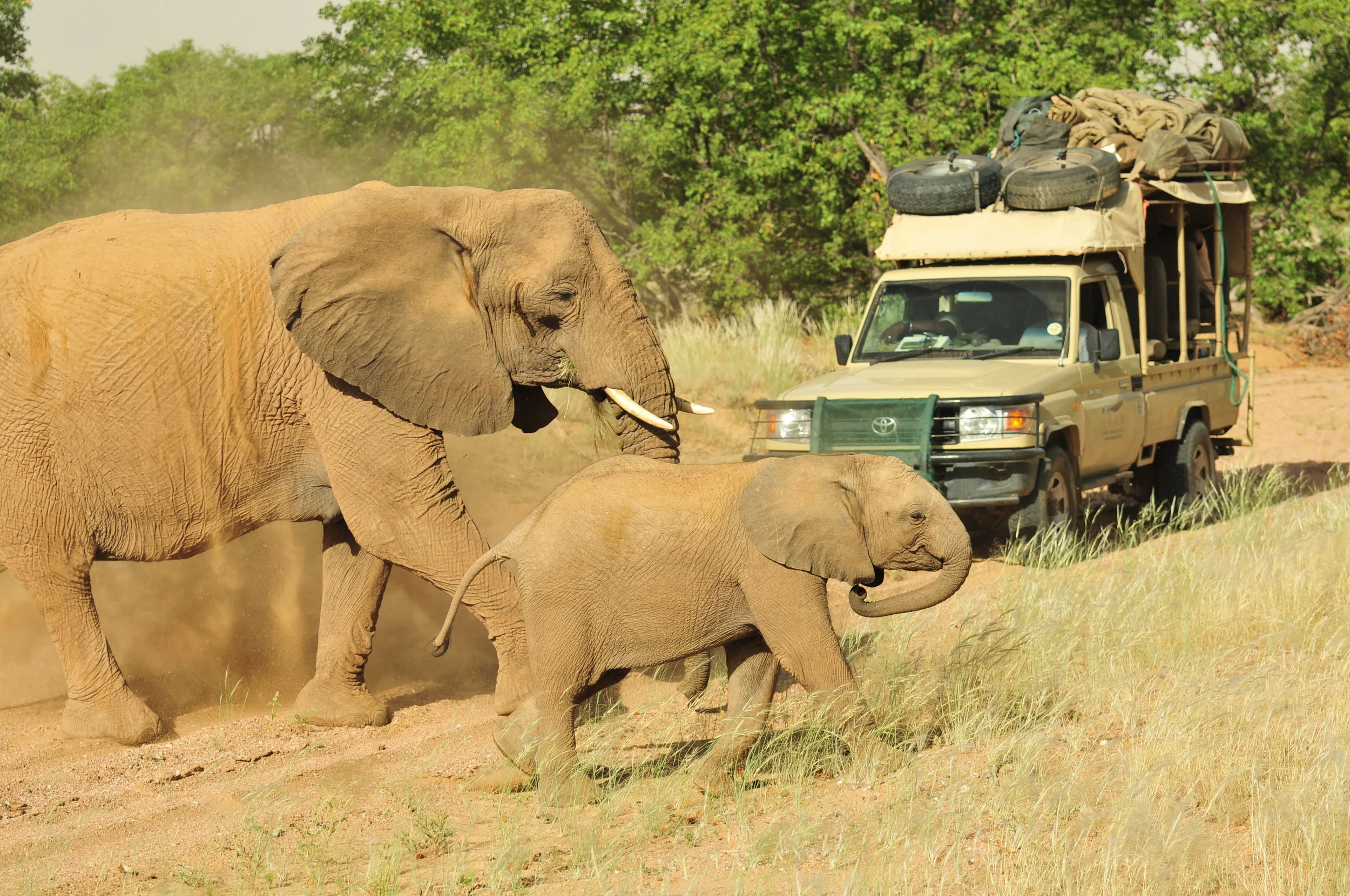Home > Desert Elephants > Elephant Tracking and ID
ELEPHANT TRACKING AND ID
Tracking and monitoring the free-roaming desert elephants in the North West region of Namibia, known as Damaraland, is an extremely important part of EHRA’s conservation work. Through doing this, we can compile and regularly update ID profiles of the elephant herds which roam throughout the region, and can analyze their behavioural patterns. This is done to ensure the protection of our elephants, but also to document important information such as births, deaths, and events such as mating. The data is entered into our comprehensive online database, which links GPS coordinates to Google Earth Maps. All of our data is provided to the Government for further analysis, allowing us to better combat elephant and human conflict.
By manually tracking the elephants we can predict which farms they will pass by next, allowing us to anticipate which farms and homesteads require protective walls around waterpoints, where the construction of these walls forms part of our Volunteer Programme. As the desert-dwelling elephants of Namibia are still adapting to the end of poaching and over-hunting, and the vast areas of land are now open to them, their movements and habits are still transient and largely unknown.
Our Volunteer Programme provides valuable funds and practical support to our elephant patrol activities; without our volunteers, we would not be able to conduct these patrols.
We monitor over 60 resident and visiting elephants across the Ugab and Huab river regions.
EHRA volunteers have built over 200 Water Point Protection Walls.
We support A.Gariseb and Okongue Primary School and Hostel, each with around 250 children.
We collaborate with over 10 local conservancies.
The PEACE Project has provided elephant safety training to over 1500 people.


DROUGHT IN NAMIBIA
Namibia is an arid and semi-arid country, and a long succession of drought has had a severe effect on the irrigation of farms. The country and its wildlife are heavily reliant on surface water irrigation from the four perennial rivers (Kavango, Zambezi, Kunene and Orange River). Agriculture has suffered from the effects of drought; livestock has died, and the communities experience food insecurity and livelihood vulnerability.
Elephants will often visit farms in search of water, which can result in damage to the farms and infrastructure, thereby providing a further catalyst to elephant-human friction. Tracking elephant movements so we can support the communities to protect themselves, is an important part of relieving the conflict.








